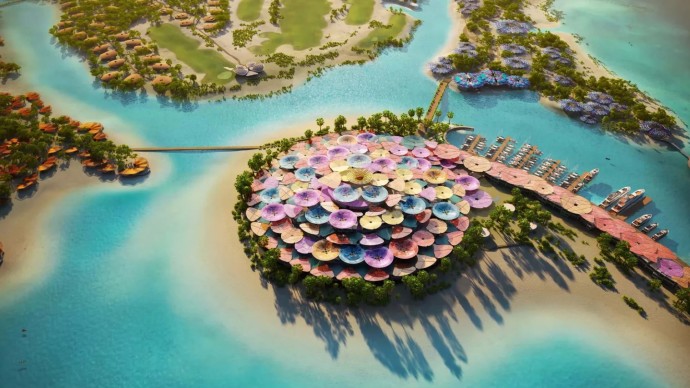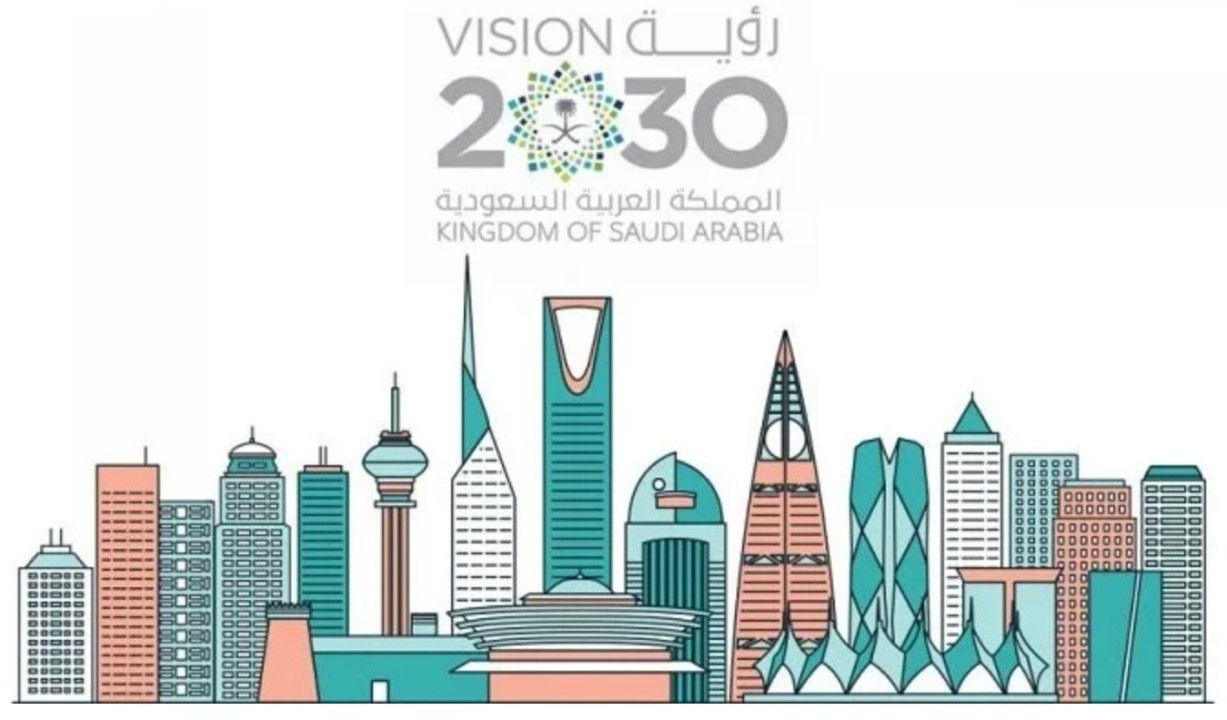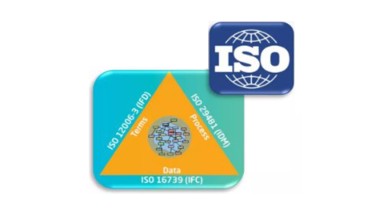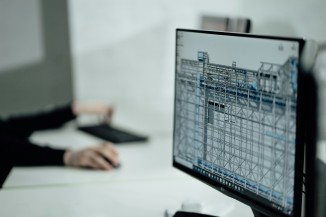Blog / BIM & Construction Management
5 Giga Infrastructure Projects Shaping Saudi Vision 2030
Categories

Saudi Arabia is undergoing an unprecedented transformation as part of its Vision 2030, a strategic framework designed to diversify its economy and foster innovation.
At the heart of this transformation are Giga Projects—ambitious infrastructure developments that will reshape the kingdom’s urban landscapes, tourism, and technological capacity.
From futuristic smart cities like NEOM to cultural hubs like Qiddiya, these projects not only demonstrate Saudi Arabia’s commitment to progress but also create vast opportunities for professionals in the construction and digital management sectors.
This article explores five of the most remarkable projects driving the nation’s vision forward.
But let’s understand the context first.
What is Saudi Vision 2030?
Saudi Vision 2030 is a strategic framework introduced by the Kingdom of Saudi Arabia in 2016, aiming to reduce the country's dependence on oil, diversify its economy, and develop various public service sectors. The initiative seeks to transform Saudi Arabia into a global investment powerhouse, an international tourism hub, and a leader in renewable energy, innovation, and sustainability. Vision 2030 is anchored in three key pillars: a vibrant society, thriving economy, and ambitious nation. It outlines sweeping reforms in industries such as education, healthcare, infrastructure, entertainment, and technology, positioning the kingdom for a prosperous and diversified future.
Central to this vision are ambitious Giga Projects, including NEOM, Qiddiya, and the Red Sea Project, which aim to revolutionize urban living, tourism, and economic opportunities. These projects prioritize sustainability, cutting-edge technology, and international collaboration, showcasing Saudi Arabia’s commitment to embracing modern global standards. Vision 2030 also promotes innovation through the adoption of smart cities, digital transformation, and green energy initiatives, creating significant opportunities for professionals in sectors like construction, real estate, and technology.

NEOM: The Futuristic Mega-City Redefining Innovation and Urban Living in Saudi Arabia
- Vision: A futuristic mega-city project designed to drive innovation and redefine urban living.
- Location: Northwest Saudi Arabia, along the Red Sea coast.
- Main Features:
- $500 billion project aimed at creating a high-tech hub.
- Key components: The Line, a linear city with no cars or streets, Oxagon, an industrial city, and Trojena, a mountain resort.
- Focus on renewable energy, with plans for 100% solar and wind energy usage.
- Emphasis on artificial intelligence, automation, and cutting-edge technology across industries.
- Major opportunities for BIM integration, particularly in sustainable urban planning and smart city development.
ROSHN: Transforming Saudi Housing with Sustainable, Community-Centric Developments
- Vision: A national real estate initiative aimed at delivering high-quality residential communities.
- Location: Various urban centers across Saudi Arabia.
- Main Features:
- Spearheaded by the Public Investment Fund (PIF), it aims to build 30,000+ homes in its first phase.
- Mixed-use neighborhoods integrating modern infrastructure with local culture.
- Focus on affordable, sustainable housing aligned with Vision 2030's goals of increasing homeownership rates.
- Emphasis on walkability, green spaces, and community-oriented urban design.
- BIM and GIS technology play a critical role in optimizing urban planning and project management.
Qiddiya: Saudi Arabia’s Premier Entertainment and Cultural Hub Redefining Global Tourism
- Vision: A large entertainment, sports, and cultural destination set to redefine the leisure sector.
- Location: Southwest of Riyadh.
- Main Features:
- Aimed at making Saudi Arabia a global tourism hub, enhancing cultural and recreational offerings.
- The project includes Six Flags Qiddiya, a major theme park, world-class sports venues, art centers, and adventure activities.
- Expected to attract 17 million visitors annually by 2030.
- Heavy use of digital tools such as BIM to design integrated leisure and sports facilities.
- Focus on eco-friendly development and sustainability, with large green spaces and responsible resource management.
The Red Sea Project: Pioneering Eco-Tourism and Luxury in Saudi Arabia’s Coastal Paradise
- Vision: A luxury tourism project focused on environmental sustainability and natural beauty.
- Location: Along the western coast of Saudi Arabia, covering over 28,000 square kilometers.
- Main Features:
- Encompasses 90+ islands, coral reefs, mountains, and desert landscapes.
- Plans for ultra-luxury resorts, hotels, and marinas, with a focus on eco-tourism.
- Powered entirely by renewable energy, and committed to preserving 75% of the natural environment.
- Use of GIS for environmental management and BIM for eco-conscious architectural designs.
- Expected to generate 70,000 new jobs and attract millions of tourists annually by 2030.
Diriyah: Preserving Saudi Arabia’s Heritage While Shaping a World-Class Cultural Destination
Vision: A cultural heritage and tourism project centered around the historical city of Diriyah, the birthplace of the Saudi state, aiming to preserve its rich history while creating a world-class tourism destination.
Location: Located just outside Riyadh, covering 7 square kilometers.
Main Features:
- Focuses on restoring and showcasing the historical area of At-Turaif, a UNESCO World Heritage site.
- Plans for luxury hotels, cultural institutions, museums, and traditional souks, blending modern development with Saudi heritage.
- Emphasizes sustainable development, with a strong commitment to cultural preservation and eco-friendly construction.
- Utilizes advanced BIM for historical preservation and development, ensuring alignment with the area's heritage and modern infrastructure needs.
- Expected to generate 55,000 new jobs and become a key attraction for cultural and heritage tourism, targeting millions of visitors by 2030.
Connecting Saudi Giga Projects with BIM and GIS
The success of these Giga Projects relies heavily on advanced digital technologies like Building Information Modelling (BIM) and Geographic Information Systems (GIS). These tools are critical for managing the complex planning, design, and construction processes that such large-scale developments demand. As Saudi Arabia accelerates its infrastructure initiatives, professionals skilled in BIM and GIS will be in high demand to ensure sustainable, efficient, and innovative project delivery.
This is where a Master’s in Global BIM Management in Civil Engineering and GIS becomes invaluable. With in-depth training on the latest digital tools and methodologies, this program equips future leaders to contribute meaningfully to projects like NEOM, ROSHN, and the Red Sea Project. By mastering the integration of BIM and GIS, graduates will be well-positioned to shape the future of global infrastructure and urban development, making them key players in the realization of Vision 2030.
Hossam Abdulaziz is Senior BIM Manager at SYSTRA Arabia and Alumni of our Master’s in Global BIM Management in Civil Engineering and GIS. He actually works with large scale projects like NEOM's Oxagon. In this video he shares why he chose to enrol in ZIGUART's master's programme and what are the benefits of integrating BIM and GIS in infrastructure projects:





